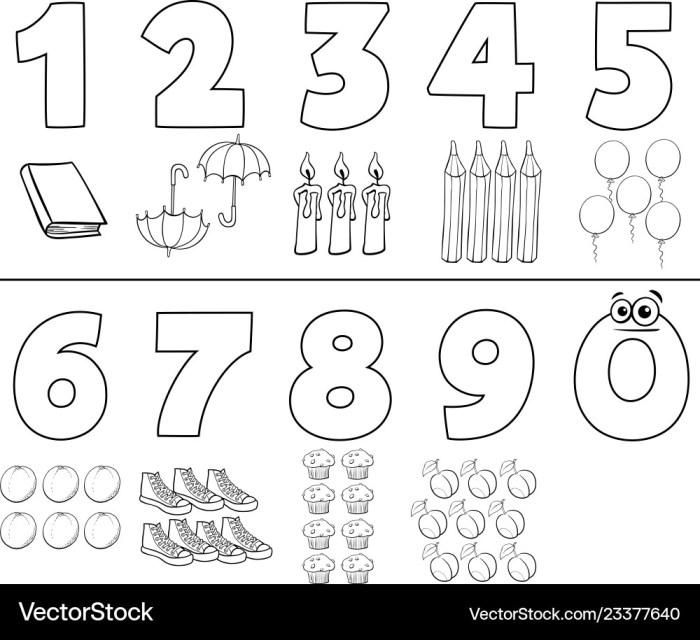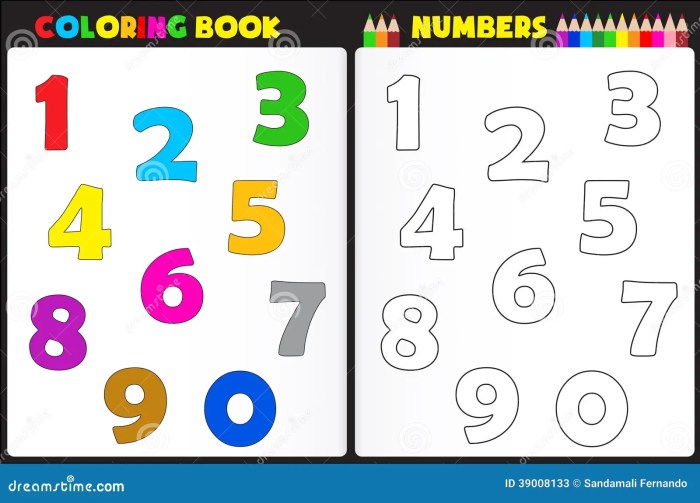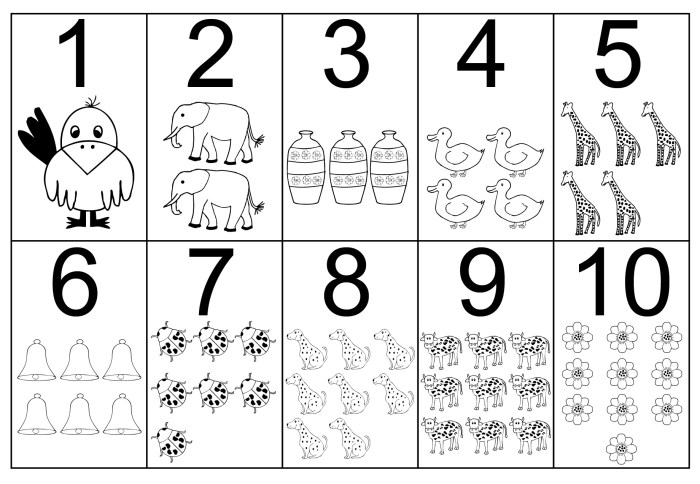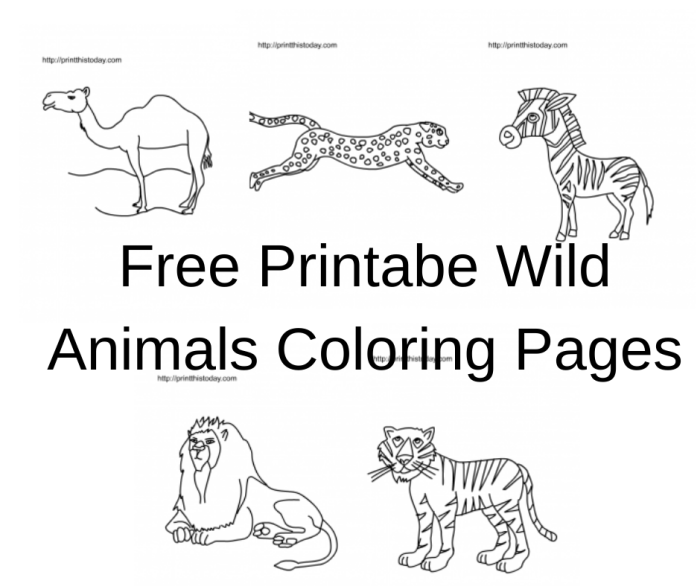Market Analysis of “Coloring Book by Number”

The coloring book by number market, while seemingly niche, demonstrates significant potential for growth, driven by various factors including the resurgence of adult coloring books and the appeal of mindful activities. Understanding the market’s demographics, competitive landscape, and pricing strategies is crucial for success in this sector.
Primary Demographics Interested in “Coloring Book by Number” Products
The primary demographic for coloring books by number is broad, encompassing several key groups. Children, particularly those aged 6-12, represent a significant portion of the market, drawn to the structured activity and the satisfaction of completing a colorful image. Adults, however, are a rapidly growing segment. This adult market includes individuals seeking stress relief, creative outlets, or simply a relaxing hobby.
Furthermore, therapeutic applications of coloring books by number are increasingly recognized, expanding the market to include individuals undergoing rehabilitation or those with certain cognitive impairments. The market also caters to hobbyists and art enthusiasts of all ages who appreciate the guided approach to creating detailed artwork.
Market Share of Different “Coloring Book by Number” Styles
While precise market share data for specific styles is difficult to obtain publicly, general trends are observable. Animal-themed coloring books consistently maintain a strong market presence, appealing to a broad audience. Mandalas, known for their intricate designs and meditative qualities, also command a substantial share, particularly within the adult market. Landscape designs enjoy popularity, offering a range of complexity levels to cater to different skill levels.
Floral designs and other themed options (e.g., fantasy, vehicles) also contribute to the overall market diversity. The relative market share fluctuates depending on current trends and seasonal influences; for instance, holiday-themed designs might see a spike in popularity around specific times of the year.
Pricing Strategies Used by Major “Coloring Book by Number” Sellers
Pricing strategies vary considerably depending on factors such as book size, page count, paper quality, and the perceived value of the design. Many sellers utilize a value-based pricing strategy, reflecting the intricacy of the designs and the overall quality of the product. Some opt for competitive pricing, aiming to undercut competitors with simpler designs or lower-quality materials. Premium pricing is also employed for books featuring exceptionally detailed designs, high-quality paper, or unique features such as spiral binding or perforated pages.
Bundle pricing, offering multiple books at a discounted rate, is a common tactic to increase sales volume.
Top 5 Competitors in the “Coloring Book by Number” Market
The following table presents a simplified overview of five significant competitors, highlighting their strengths and weaknesses. Note that this is not an exhaustive list, and market positioning can change rapidly.
| Competitor | Strengths | Weaknesses | Pricing Strategy |
|---|---|---|---|
| Company A | Wide range of designs, high-quality paper | Higher price point | Value-based |
| Company B | Large selection, strong online presence | Less emphasis on design uniqueness | Competitive |
| Company C | Unique artistic styles, strong brand recognition | Limited variety of themes | Premium |
| Company D | Focus on children’s designs, affordability | Simpler designs | Cost-based |
| Company E | Innovative designs, use of unique materials | Relatively small market share | Premium/Niche |
Design and Development of “Coloring Book by Number” Products

Creating engaging and high-quality coloring books by number requires careful consideration of design elements and the production process. The target audience, whether children or adults, will significantly influence the complexity and style of the designs. Furthermore, the choice of software and color palettes directly impacts the final product’s visual appeal and printability.
This section details the design and development process, outlining best practices and providing examples to guide the creation of successful coloring books by number.
Page Layout Designs
Three distinct page layouts are presented below, each catering to a different skill level. These examples demonstrate the range of complexity achievable within the coloring book by number format.
The resurgence of coloring book by number activities is fascinating, offering a unique blend of creativity and structured relaxation. For those with a sweet tooth, the delightful world of themed coloring pages expands even further, with options like the vibrant and delicious designs found at candy coloring book pages adding a sugary twist to the numbered coloring experience.
Ultimately, the appeal of coloring book by number lies in its ability to provide a focused and enjoyable creative outlet, regardless of the theme.
- Simple Design (Beginner): This page features large, easily identifiable numbered sections within a simple, recognizable image, such as a large flower or a single animal. Numbered sections are clearly separated and avoid intricate details. The numbers are large and bold, suitable for young children.
- Intermediate Design: This page incorporates a more complex image, potentially containing multiple objects or a more detailed scene. Numbered sections are smaller and more numerous, requiring greater precision and attention to detail. The numbers are still clearly visible but may be slightly smaller than in the beginner design.
- Complex Design (Advanced): This page features a highly detailed image with numerous small, intricately shaped numbered sections. This design challenges users with fine motor skills and requires a high level of concentration. Numbers may be smaller and more closely grouped, requiring careful observation.
Best Practices for High-Quality Printable Designs
Creating high-quality printable designs is crucial for a positive user experience. Several best practices ensure the final product is visually appealing and easy to use.
High-resolution images are essential to prevent pixelation when printed. Vector graphics are ideal, allowing for scaling without loss of quality. Clear, bold numbers are vital for easy identification, and sufficient spacing between sections prevents accidental coloring outside the designated areas. Consider using a consistent font and size for numbers throughout the book for uniformity. Finally, test prints are recommended to ensure proper color reproduction and section clarity before mass production.
Software Comparison for “Coloring Book by Number” Creation
Several software options are available for creating coloring book by number pages, each with its advantages and disadvantages.
Vector-based software like Adobe Illustrator or Inkscape offers superior scalability and precise control over shapes and lines, making them ideal for creating detailed designs. Raster-based software like Adobe Photoshop or GIMP can be used for more artistic, hand-drawn styles, but scaling might result in a loss of quality. Specialized coloring book software might offer streamlined workflows but might lack the flexibility of general-purpose design programs.
The choice of software depends on the desired level of detail, artistic style, and the user’s familiarity with different programs.
Effective Color Palettes
Choosing appropriate color palettes enhances the visual appeal and overall user experience. The following examples illustrate effective palettes categorized by theme:
- Calming: Pastel shades of blues, greens, and pinks; muted earth tones; soft grays and creams. Example: Light sky blue, pale mint green, blush pink, creamy beige.
- Vibrant: Bright, saturated colors with high contrast; jewel tones; neon shades. Example: Bright red, sunshine yellow, deep teal, fuchsia pink.
- Monochromatic: Variations of a single color, ranging from light to dark shades. Example: Different shades of purple, from lavender to deep violet.
User Experience and Feedback on “Coloring Book by Number”

Creating engaging and user-friendly coloring books by number requires careful consideration of design elements and a robust feedback mechanism. A successful product balances aesthetic appeal with intuitive usability, catering to a diverse range of users with varying skill levels and preferences. Understanding user experience is crucial for iterative improvement and market success.Potential Usability Issues and Improvements in “Coloring Book by Number” Designs
Usability Issues and Design Improvements
Several design aspects can significantly impact the user experience of coloring books by number. For example, small or poorly defined numbered areas can make coloring difficult and frustrating, particularly for younger children or those with visual impairments. Similarly, a cluttered layout with too many numbers or intricate designs can be overwhelming. Conversely, designs that are too simple might lack engagement.
Improvements could include using larger, clearer numbers, providing sufficient white space between numbered areas, and offering a variety of design complexities to cater to different skill levels. Consider using a variety of color palettes to appeal to diverse tastes and potentially offering color suggestions within the book itself. Furthermore, the paper quality should be considered; thicker paper would prevent bleed-through, enhancing the user experience, particularly for those using markers or watercolors.
Collecting and Analyzing User Feedback, Coloring book by number
Gathering user feedback is essential for iterative product development. Multiple methods can be employed, including online surveys, focus groups, and social media monitoring. Online surveys can efficiently collect quantitative data on user satisfaction and identify specific areas for improvement. Focus groups provide qualitative insights into user preferences and challenges. Social media monitoring can reveal user opinions and highlight potential issues not identified through other methods.
Analyzing this feedback involves categorizing responses, identifying trends, and using this information to inform design modifications. For example, consistently negative feedback regarding the size of the numbered areas could lead to an increase in the size of these areas in subsequent editions.
Comparison of Different Formats
Coloring books by number are available in various formats, each with its own strengths and weaknesses. Physical books offer a tangible experience, appealing to those who prefer traditional coloring methods. However, they are less flexible than digital formats, lacking features such as color palettes, undo/redo functionality, and the option to easily share completed artwork. Digital downloads offer a more affordable and environmentally friendly alternative, but require a device and software to access and use.
Apps offer the most flexibility, often incorporating interactive features, but may require an internet connection and may have subscription costs. The choice of format depends on target audience and the desired level of interactivity. For instance, a physical book might be ideal for younger children, while an app might appeal to adults seeking a more interactive experience.
Categorized Feedback and Design Modifications
| Category | Feedback Examples | Design Modifications |
|---|---|---|
| Design | “Numbers are too small,” “Design is too cluttered,” “Colors are not vibrant enough” | Increase number size, improve layout spacing, use a wider range of colors |
| Difficulty | “Too easy,” “Too difficult,” “Instructions are unclear” | Offer a range of difficulty levels, provide clearer instructions, include visual aids |
| Overall Satisfaction | “Very enjoyable,” “Frustrating experience,” “Poor value for money” | Improve design and usability, offer competitive pricing, include bonus content |
| Paper Quality | “Markers bleed through,” “Paper is too thin” | Use thicker, higher-quality paper; consider specifying paper type recommended for use |
FAQ Insights: Coloring Book By Number
What are the best tools for creating coloring book by number pages?
Adobe Illustrator and Photoshop are popular choices for professional-grade designs. Simpler options include Procreate (iPad) and Krita (free and open-source).
How can I price my coloring book by number products competitively?
Research competitor pricing, consider production costs, and factor in your desired profit margin. Offer different pricing tiers based on book size, complexity, and format (digital vs. print).
What are some common mistakes to avoid when designing coloring book by number pages?
Avoid overly small or cramped numbers, inconsistent number placement, and unclear line art. Ensure the color palette is well-balanced and visually appealing.
Where can I find feedback on my coloring book by number designs?
Use online platforms like Etsy or social media to gather customer reviews. Consider running surveys or focus groups for more in-depth feedback.

